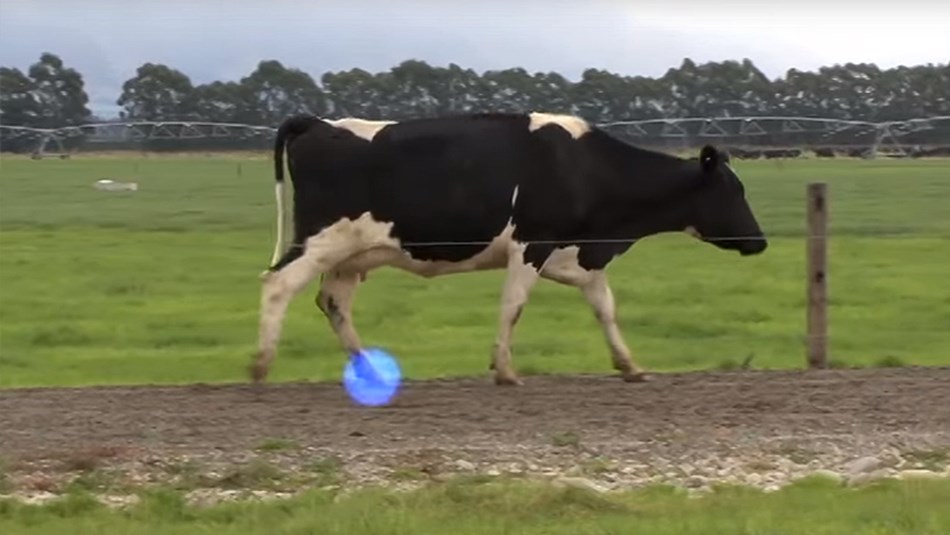Lameness is a major issue within dairy herds and is the second major cow health concern following closely behind mastitis. 20-35% of herds suffer from some degree of lameness.
Digital Dermatitis or more commonly known as “Mortellaro” is the main cause. A combination of bacteria is picked up by the hoof and an infection sets in on the soft tissue at the heel. The lesion is very painful and can have major knock on effects on the cow. Her feed intake will be reduced along with restricted mobility due to the pain. The end result for farmers is a decreased milk yield, veterinary bills and dumped milk, extra labour, reduced fertility and reduced net margins. A 20% infection rate in a herd will cost €98/cow. In the average 100 cow herd that is a loss of €9,800 losses on lameness alone. Treatment for Mortellaro often involves antibiotic and pain relief. The bacteria can become highly infectious and easily passed from one cow to another. The cow must be isolated close to the parlour to reduce distance walked and prevent further spread.
Other causes of lameness are sole bruises, sole ulcers, white line disease and laminitis. These are caused from an injury rather than an infection. With 90% of cases affecting hind limbs, generally affecting the outer claw. Walking on rough roadways and wet conditions will weaken the hoof wall. For 30% cases, within the first hour, water is absorbed into the hoof, softening the hoof. Care must be taken in the coming days/week as rain falls, hoofs will absorb the water, while ground remains rough/uneven, possibly causing damage to cow’s feet introducing lameness
Signs to look for: Hunched back, stiff joints, one limb moving slower, short steps, standing with front legs crossed and swinging hind leg out or inwards.
Lameness prevention is very minimal on Irish Farms and usually only begins when there is a problem. Prevention is much better than cure, can be managed through regular foot bathing, clean yards and cubicles and hoof pairing when required.
Also as part of a prevention programme, feeding a mineral supplement, such as the Trace Pak range from Arrabawn, which contains chelated zinc, will help strengthen the hoof wall making the hoof more durable.
Foot Bath : Fill to a depth of 6-8 inches to cover entire hoof and 8-10 feet long. Never leave the volume drop below 5 inches. A top up between milking’s or towards the end of milking. Ensure product chosen works well in organic matter and dirty water. Such as Provita Hoofsure Endurance. In general solutions need to be changed every 200 walk-throughs. Once a week is plenty enough for a non-affected herd as a prevention.

